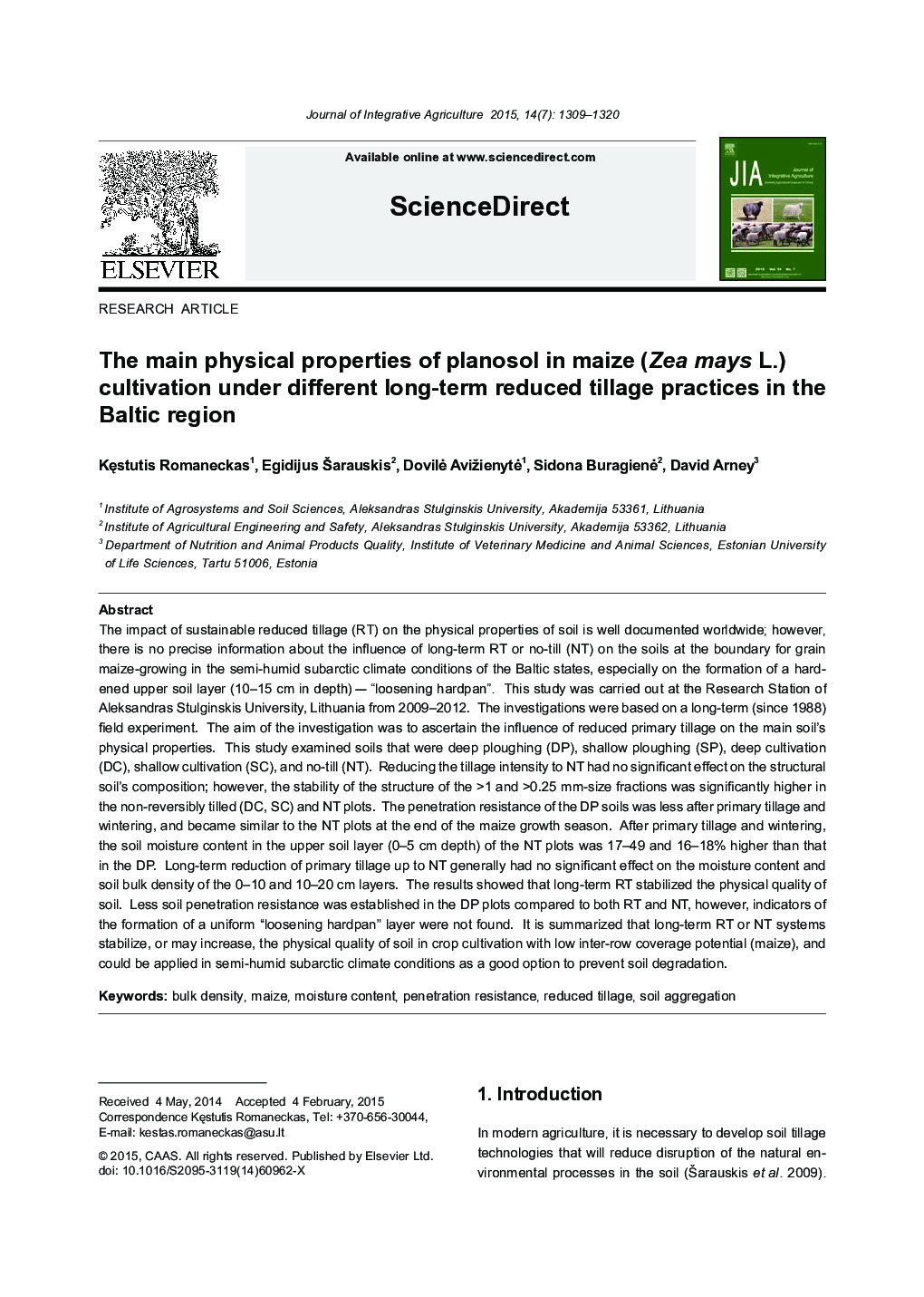| کد مقاله | کد نشریه | سال انتشار | مقاله انگلیسی | نسخه تمام متن |
|---|---|---|---|---|
| 4494308 | 1318708 | 2015 | 12 صفحه PDF | دانلود رایگان |

The impact of sustainable reduced tillage (RT) on the physical properties of soil is well documented worldwide; however, there is no precise information about the influence of long-term RT or no-till (NT) on the soils at the boundary for grain maize-growing in the semi-humid subarctic climate conditions of the Baltic states, especially on the formation of a hard-ened upper soil layer (10–15 cm in depth) — “loosening hardpan”. This study was carried out at the Research Station of Aleksandras Stulginskis University, Lithuania from 2009–2012. The investigations were based on a long-term (since 1988) field experiment. The aim of the investigation was to ascertain the influence of reduced primary tillage on the main soil's physical properties. This study examined soils that were deep ploughing (DP), shallow ploughing (SP), deep cultivation (DC), shallow cultivation (SC), and no-till (NT). Reducing the tillage intensity to NT had no significant effect on the structural soil's composition; however, the stability of the structure of the >1 and >0.25 mm-size fractions was significantly higher in the non-reversibly tilled (DC, SC) and NT plots. The penetration resistance of the DP soils was less after primary tillage and wintering, and became similar to the NT plots at the end of the maize growth season. After primary tillage and wintering, the soil moisture content in the upper soil layer (0–5 cm depth) of the NT plots was 17–49 and 16–18% higher than that in the DP. Long-term reduction of primary tillage up to NT generally had no significant effect on the moisture content and soil bulk density of the 0–10 and 10–20 cm layers. The results showed that long-term RT stabilized the physical quality of soil. Less soil penetration resistance was established in the DP plots compared to both RT and NT, however, indicators of the formation of a uniform “loosening hardpan” layer were not found. It is summarized that long-term RT or NT systems stabilize, or may increase, the physical quality of soil in crop cultivation with low inter-row coverage potential (maize), and could be applied in semi-humid subarctic climate conditions as a good option to prevent soil degradation.
Journal: Journal of Integrative Agriculture - Volume 14, Issue 7, July 2015, Pages 1309-1320